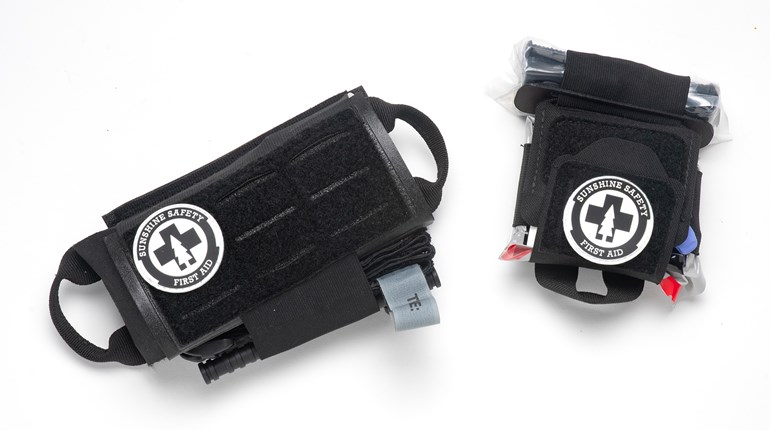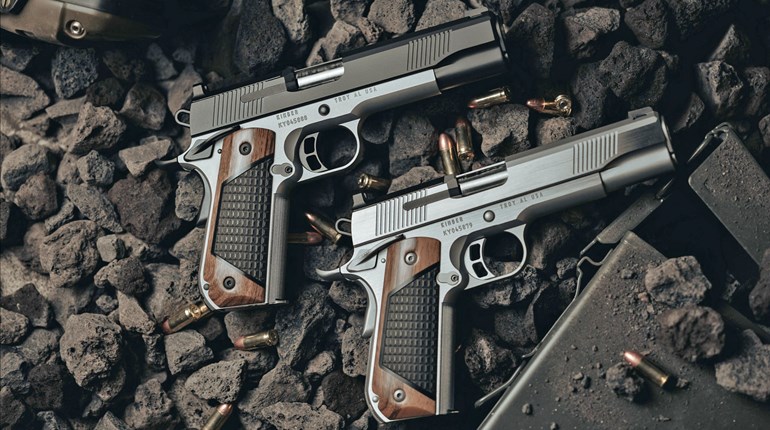
When you’re choosing a firearm instructor, you are choosing someone to teach you how to potentially save your life and the lives of those close to you. So, choosing the cheapest one available makes as much sense as choosing the cheapest skydiving instructor.
The minimum amount of training needed to teach concealed carry in many states is instructor certifications in NRA Basic Pistol or a similar class. This is the bare minimum, though, and a good instructor will have many, many more hours of classes beyond this. Aside from this minimum, what else should you look for in a good firearms trainer?
- Someone who lists their sources. I’ve taken classes from major training groups that never mention anyone other than the people associated with that school. They taught the Color Code without mentioning it was Col. Jeff Cooper who came up with that idea. They also taught the Weaver Stance without saying who invented it, giving their students the impression that everything we know about firearms training originated in that school. The fact of the matter is everyone who trains people in the safe use of firearms owes a huge debt to those who have gone before us, and acknowledging that debt is a sign of a trainer who is interested in imparting knowledge, not creating followers.
- Someone who has multiple sources. The broader the trainer’s knowledge base, the more options they have to diagnose and correct a student’s issue with learning to shoot well. Also, trainers who have a wide variety of sources tend to come up with more innovative and effective training techniques because they are not hidebound to one way of thinking. In addition to this, look for instructors who have taken courses that require a measured, standardized test of some sort to become an instructor, such as Gunsite, Rangemaster or Massad Ayood Group because that introduces an element of intellectual rigor and accountability into their teaching process.
- Someone with relevant training. I have nothing but the greatest respect for our military and law enforcement, but the jobs they perform are different from the job I have. Therefore, the firearm training they receive is meant to accomplish a different task than the task I need to accomplish as an armed civilian. If the firearm instructor you’re considering has combat experience or is a seasoned police officer, that’s fine. Just make sure they also have training that augments what they’ve learned in the service and helps translate that service in a way that is useful to we armed citizens.
- Someone who competes on a regular basis. Nothing will show what is working and what needs improvement than shooting a practical pistol match. Even some of the most elite troops in the Army have learned that performing a simple task like hitting a target 10 yards away becomes a Herculean feat under the simulated stress of a timer and the gaze of your peers. Competition also helps you develop pre-visualization skills, something that is an essential part of the armed lifestyle, and it keeps you humble, because you realize you may not be the be-all and end-all authority on what good shooting looks like.
- Someone who encourages wider training. Simply put, any instructor who doesn’t encourage you to train with other trainers has their own best interests at heart, not yours. No single firearm instructor has this all figured out, and if your trainer is not comfortable with you learning from other instructors, they're more worried about repeat business than the growth of their students.
- Someone who is also committed to lifelong learning. If the last firearm class your instructor attended was during the Bush administration (the George H.W. Bush administration), their techniques are probably not the ones you want to learn. An instructor who has recently taken classes from another instructor will have more current and more effective teaching methods that use more modern theories of instructional learning and firearm technique.
Lastly, your instructor should focus on teaching the students who are in his or her class, versus standing up in front of them and going through the motions. A firearm instructor who’s committed to excellence will also be committed to instilling that drive for excellence in his or her students, making them safer, more prepared gun owners.






































